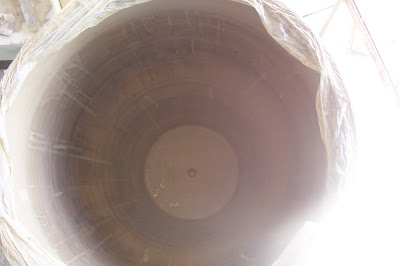Sometimes I have trouble keeping my eye on the prize. With at least four different clay bodies, all maturing at different temperatures and glazes from 1000c to 1350+, things soon get a little overwhelming...So today I decided to try and keep it simple with a solo raku firing.
After work in the morning, I stirred up some glazes from earlier in the year and applied them to some raw pots I made over the last couple of weeks and spent a sunny afternoon doing what I enjoy most - glazing, stacking, firing, and unpacking, all in the same day.
But before I start rambling, here are some photos of the day's happenings:
 |
| Raku stack ready to go with cone 06 in position. |
 |
| The all important items and essential firing charts. |
 |
| The fickle Dunedin weather goes something like this-Monday hot and sunny about 32 deg.C with a coastline like the Mediterranean (minus the people). Good for surfing. By Friday, snow to sea level - an unexpected surprise in the late spring, even though they said it was coming. |
 |
| After a short jog along the beach while the pots were cooling off in the reduction bin, and a quick scrub, I was pretty happy with the outcome. |
Man, I could raku all year with these kinda results...But what's that, is that about 150 salt glaze tests ready to fire, oh well here we go again!
























































